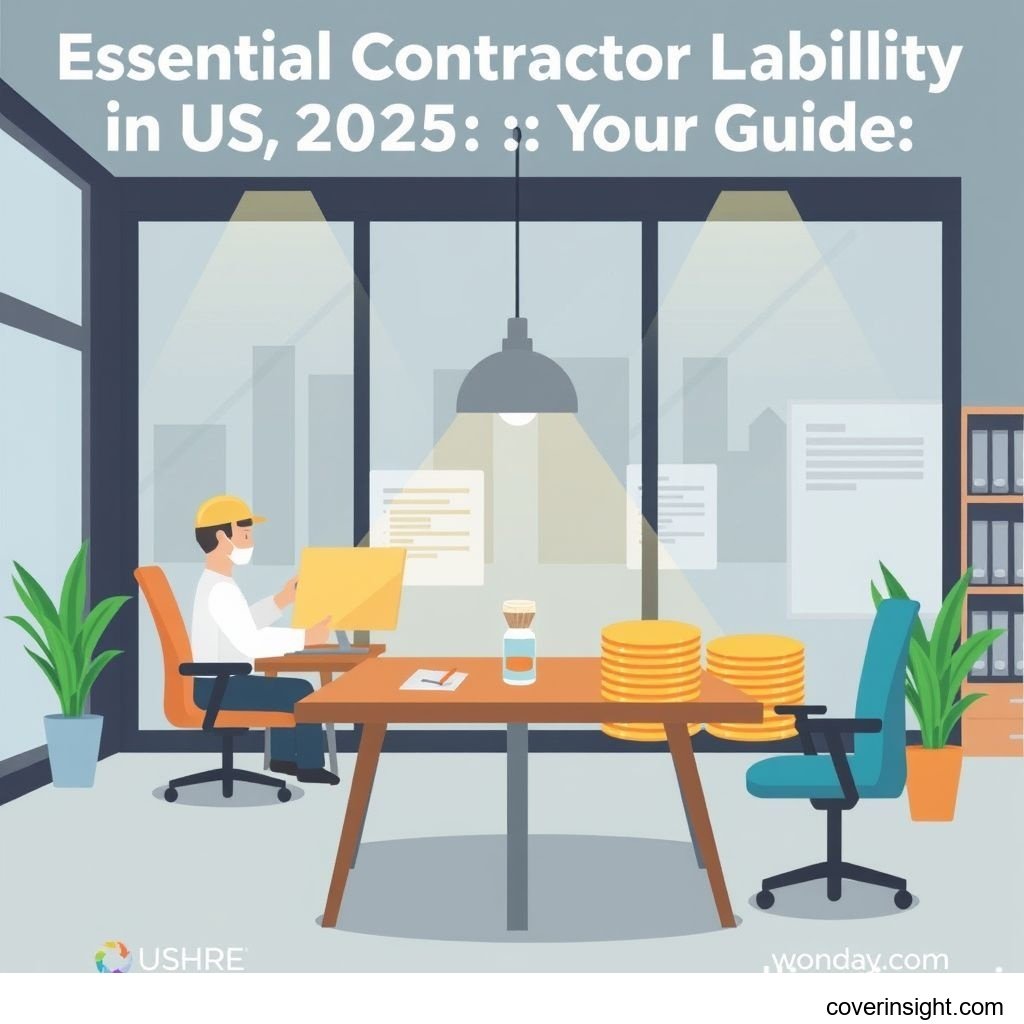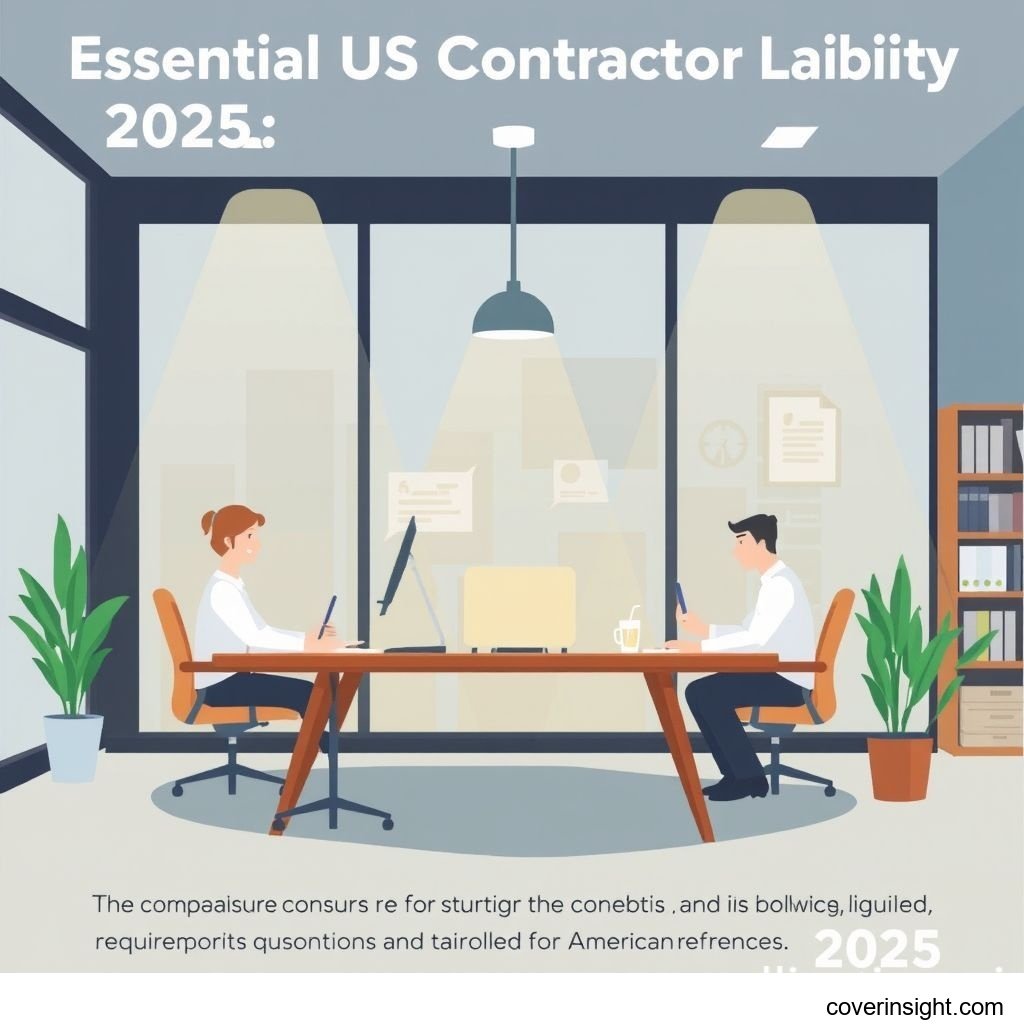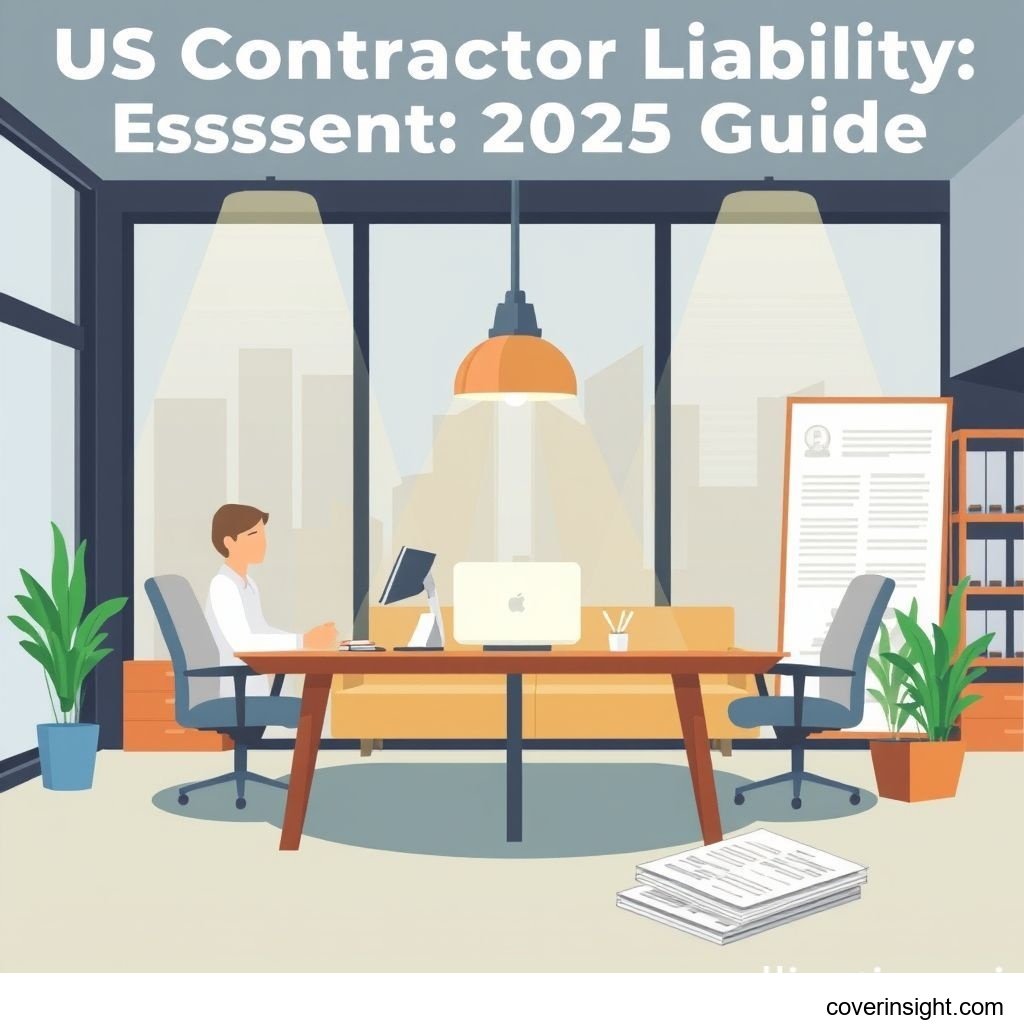Essential Contractor Liability in US 2025: Your Guide
Introduction
Navigating the complex landscape of contractor liability requirements in the US for 2025 is more crucial than ever. As a contractor, whether you're a sole proprietor or managing a growing team, understanding your legal and financial obligations isn't just about compliance; it's about safeguarding your business's future. The right insurance coverage acts as your essential shield against unexpected lawsuits, property damage, or injuries that could otherwise derail your operations. Without it, even a minor incident can escalate into a financial catastrophe, leaving you on the hook for significant costs. For a broader perspective on various insurance needs, you might explore general Insurance Resources Global.
Coverage Details
What’s Included
Typically, essential contractor liability coverage in the US encompasses several key areas designed to protect you from common risks.
-
General Liability Insurance (CGL): This is often the bedrock. It covers third-party bodily injury and property damage that occurs due to your business operations. For example, if your team accidentally damages a client's property during a renovation, or a visitor trips and falls at your job site, CGL can cover the medical bills and repair costs.
-
Professional Liability Insurance (Errors & Omissions - E&O): For contractors who offer design, consulting, or advisory services, E&O is vital. It protects against claims of negligence, errors, or omissions in your professional services that cause financial loss to a client.
-
Workers' Compensation Insurance: If you have employees, this is usually a state-mandated requirement. It covers medical expenses and lost wages for employees injured on the job, protecting your business from costly lawsuits.
-
Commercial Auto Insurance: If you use vehicles for business purposes (transporting tools, materials, or driving to job sites), this covers accidents involving those vehicles.
-
Builder's Risk Insurance: Specific to construction projects, this protects structures under construction from damage caused by fire, vandalism, theft, and other perils.
Common Exclusions
While comprehensive, contractor liability policies do have their limits and common exclusions. It's vital to read your policy carefully, but generally, you won't find coverage for:
-
Intentional Acts: Damage or injury caused intentionally by you or your employees.
-
Punitive Damages: Penalties awarded to punish a defendant, rather than compensate the plaintiff.
-
Employee Injuries (if no Workers' Comp): Without a specific workers' compensation policy, general liability typically won't cover injuries to your own employees.
-
Damage to Your Own Property: This would fall under a commercial property policy, not liability.
-
Workmanship Errors: While CGL might cover consequential damage arising from poor workmanship (e.g., a faulty pipe installation leading to water damage), it won't cover the cost to repair the faulty workmanship itself.
-
Professional Negligence (without E&O): General liability won't cover claims stemming from advice or professional services if you don't have a separate E&O policy.
Cost Analysis
Price Factors
The cost of contractor liability insurance isn't a fixed price; it's influenced by several key factors, much like a custom-built home.
-
Type of Work Performed: High-risk trades (e.g., roofing, demolition, electrical work) typically face higher premiums than lower-risk professions (e.g., graphic design, consulting).
-
Location: Insurance rates can vary significantly by state and even by zip code, reflecting local regulations, claims history, and cost of living. For instance, according to a recent report from the National Association of Insurance Commissioners (NAIC), average commercial general liability premiums can differ by as much as 40% between states with high litigation rates and those with more favorable legal environments. You can learn more about state-specific regulations by visiting State Insurance Departments.
-
Coverage Limits & Deductibles: Higher coverage limits mean more protection but also higher premiums. Conversely, choosing a higher deductible (the amount you pay out-of-pocket before insurance kicks in) can lower your premium.
-
Claims History: A history of previous claims will undoubtedly lead to higher premiums, as you're seen as a higher risk. Keeping a clean record is like gold in the insurance world.
-
Business Size & Revenue: Larger businesses with more employees and higher revenue generally face higher premiums due to increased exposure to risk.
-
Safety Practices: Implementing robust safety protocols, regular training, and a strong safety culture can sometimes lead to discounts from insurers who view you as a responsible risk.
Saving Tips
Smart contractors know how to keep their insurance costs in check without sacrificing essential protection.
-
Bundle Policies: Many insurers offer discounts when you purchase multiple policies (e.g., general liability, commercial auto, workers' comp) from them. It's like a package deal for your business.
-
Increase Deductibles: If your cash flow allows, opting for a higher deductible can significantly lower your monthly or annual premiums. Just ensure you can comfortably cover that deductible in a pinch.
-
Implement Strong Safety Programs: Show your insurer you're serious about risk management. A well-documented safety program can demonstrate lower risk and potentially earn you discounts.
-
Maintain a Good Claims History: As mentioned, avoiding claims where possible will keep your premiums lower in the long run. Sometimes, paying for small damages out-of-pocket can be more cost-effective than filing a claim that raises your rates.
-
Shop Around: Don't just stick with the first quote you get. Obtain quotes from several different reputable insurance providers. The market is competitive, and prices can vary. You can also consult resources like US Insurance Home for general guidance.
-
Review Your Policy Annually: Your business changes, and so should your insurance. Annually review your coverage with your agent to ensure it still meets your needs and to identify any opportunities for cost savings.
FAQs
How much does contractor liability requirements cost?
The cost varies widely, from a few hundred dollars annually for a small, low-risk sole proprietor to tens of thousands for larger, high-risk construction firms. Factors like your trade, location, claims history, and chosen coverage limits all play a significant role.
What affects premiums?
Premiums are influenced by the inherent risk of your specific contracting work, your geographic location, your past claims record, the amount of coverage you desire, and your business's size and revenue. Think of it as a risk assessment: the higher the perceived risk, the higher the premium.
Is it mandatory?
While general liability insurance isn't always federally mandated, it is often required by state laws, clients, or industry regulations. Many states mandate workers' compensation if you have employees. Furthermore, most clients, especially larger commercial ones, will require proof of adequate liability insurance before you can even bid on a project. Without it, you're simply out of the game.
How to choose?
Choosing the right policy involves assessing your specific risks, understanding your contractual obligations (what your clients require), and comparing quotes from reputable insurers. It's often wise to work with an independent insurance agent who specializes in commercial policies, as they can help you navigate options and ensure you have sufficient coverage without overpaying. Don't be shy about asking questions and getting clarifications.
Consequences of no coverage?
Operating without essential contractor liability coverage is akin to playing Russian roulette with your business. If an incident occurs – say, a client is injured on your job site, or you cause significant property damage – you would be personally responsible for all associated costs. This could include substantial medical bills, property repair costs, legal fees, and settlement payouts, potentially leading to bankruptcy. According to recent data from the Bureau of Labor Statistics (BLS), construction site accidents, for example, remain a significant concern, leading to numerous injury claims annually. A contractor in Arizona recently faced a multi-million dollar lawsuit when their faulty wiring led to a commercial fire, devastating the client's business. Without adequate liability insurance, the contractor's business was forced into liquidation, and their personal assets were at risk. It’s simply not worth the gamble; a stitch in time saves nine, and good insurance is that stitch. Even for general life planning, understanding available resources is key, like what you can find on Healthcare.gov for health insurance needs.
Author Insight & Experience: Based on my experience working within the US small business landscape, I’ve seen firsthand how a lack of proper liability insurance can absolutely cripple a thriving contractor. It's not just about covering worst-case scenarios; it's about peace of mind. As someone who's witnessed the aftermath of unforeseen incidents, I can tell you that the upfront investment in a robust policy is a fraction of the cost of defending a lawsuit out-of-pocket. Many contractors, especially when they're just starting, try to cut corners here, and it's almost always a decision they come to regret. It truly is one of those areas where being penny-wise can lead to being pound-foolish.








Comments